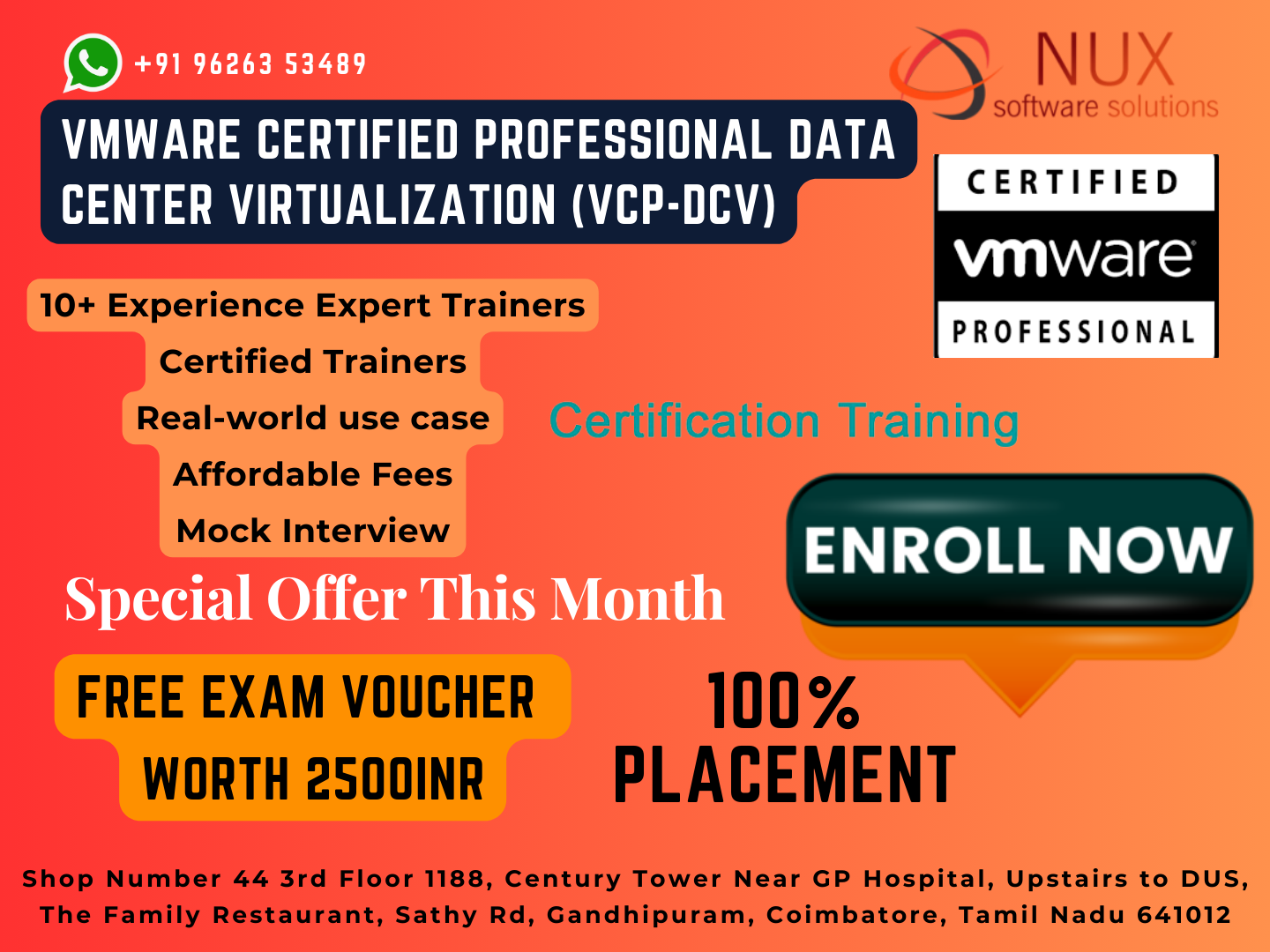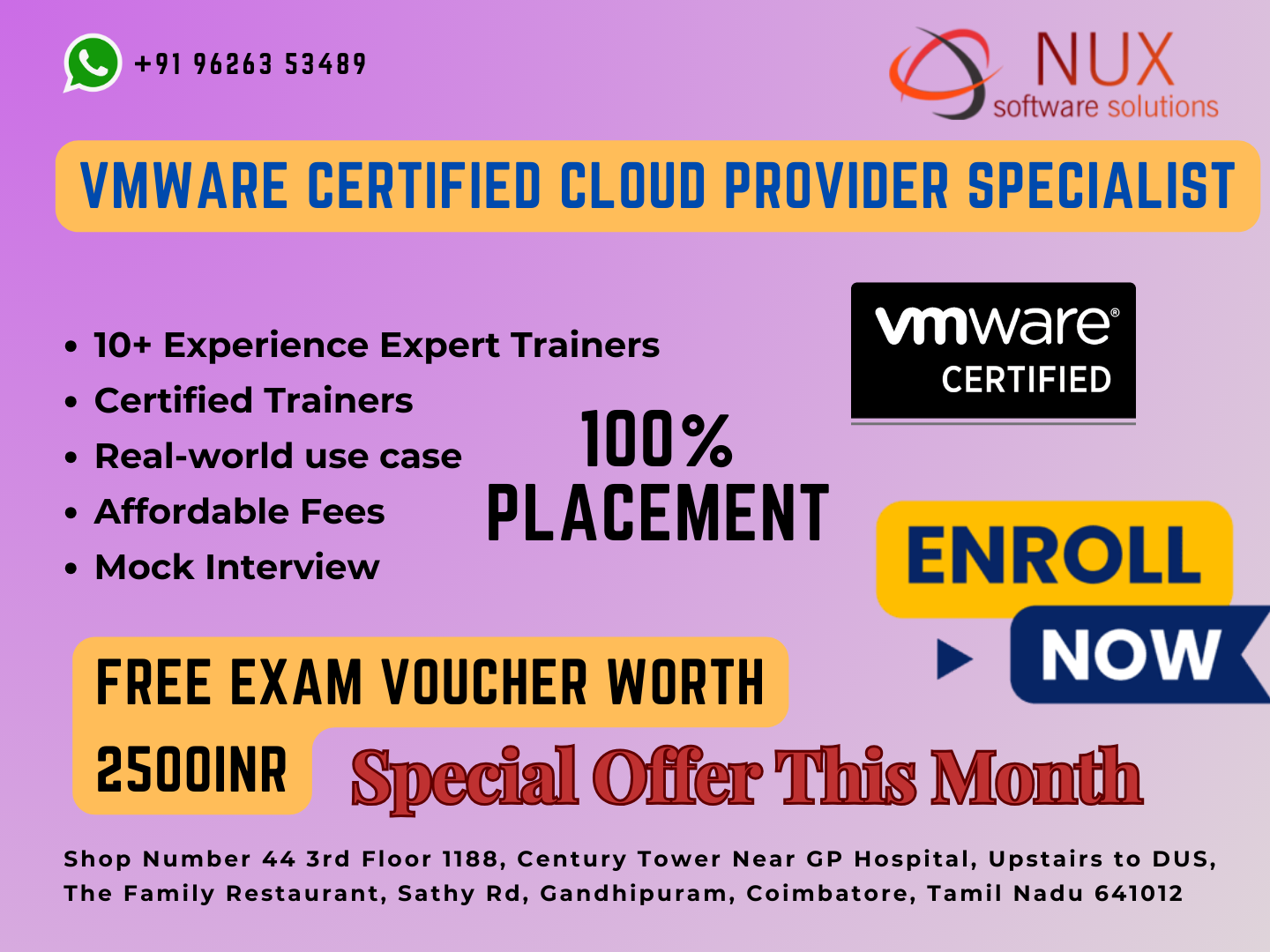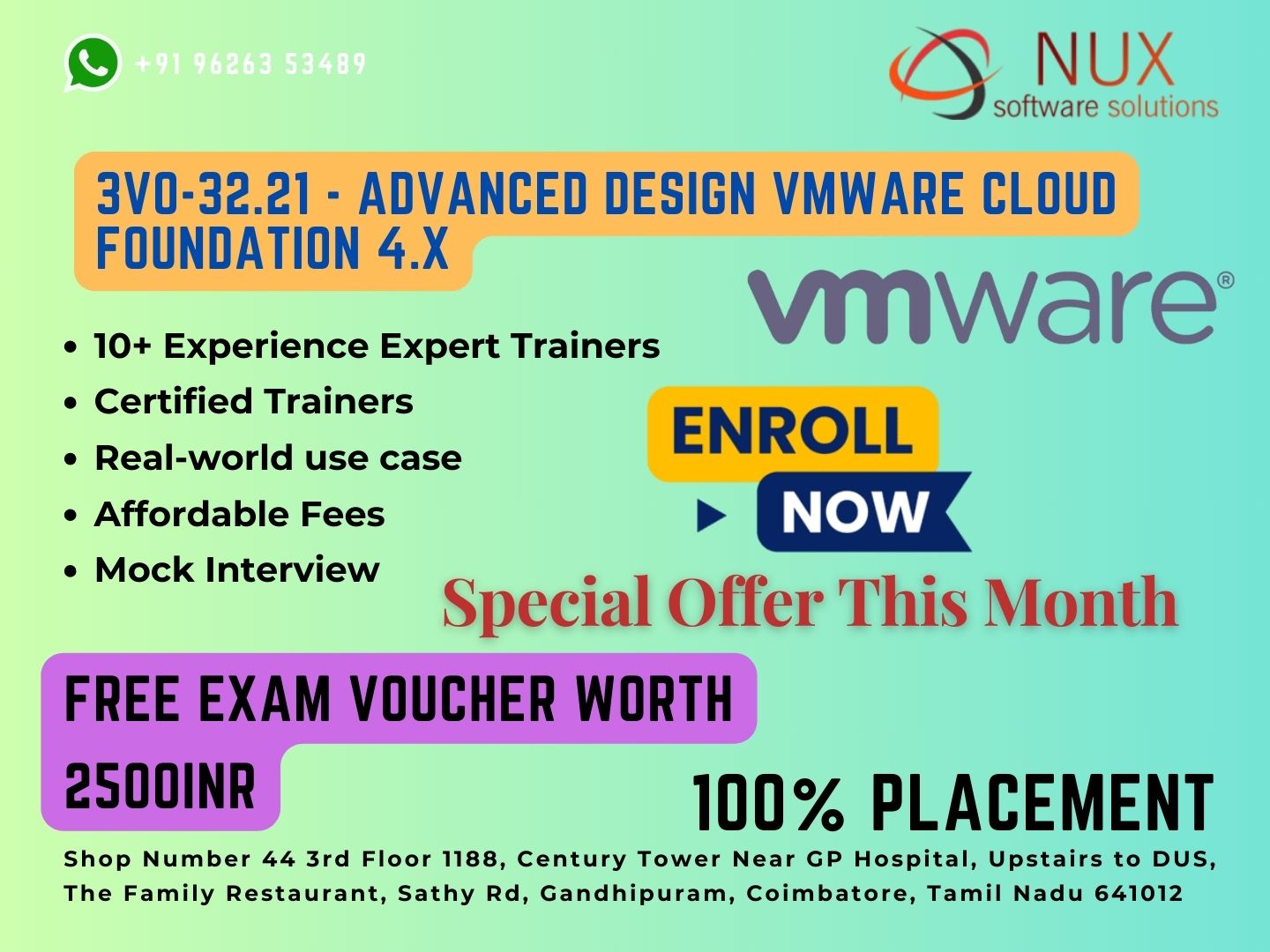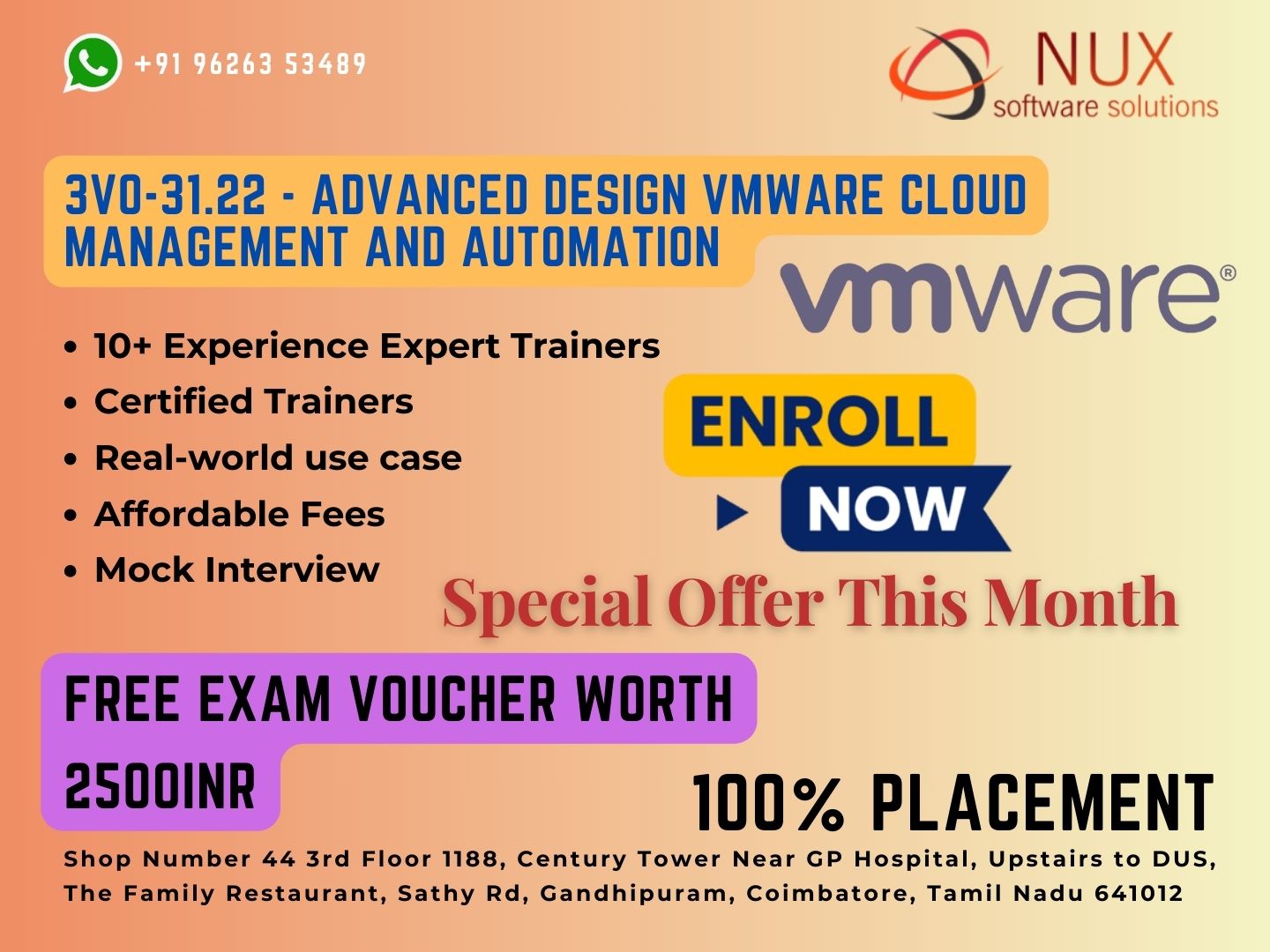VMware certified Professional Data Center Virtualization (VCP-DCV)


It’s fantastic to hear about Nux Software Training & Certification Solutions’ recognition as the best institute for VMware Certified Professional Data Center Virtualization (VCP-DCV) training in Coimbatore. The comprehensive training programs, hands-on experience, and the availability of advanced lab infrastructure truly contribute to a conducive learning environment.
The flexibility of the training center to cater to professionals, individuals, corporate clients, and provide live project training indicates a commitment to meeting diverse learning needs. The 24X7 lab accessibility is a great feature, allowing learners to practice and refine their skills at their convenience.
The presence of international expert trainers with real-time industry experience is a key strength, providing learners with insights from professionals who have navigated the challenges of the industry.
If there are specific areas or aspects of VCP-DCV certification, VMware technologies, or any other IT-related topics you’d like to explore further, feel free to share. I’m here to assist and discuss any questions or interests you might have!
Course Syllabus
VMware Certified Professional Data Center Virtualization (VCP-DCV) Syllabus
Architectures and Technologies
- Identify the pre-requisites and components for a vSphere implementation
- Describe vCenter Server topology
- Identify and differentiate storage access protocols for vSphere (NFS, iSCSI, SAN, etc.)
- Describe storage datastore types for vSphere
- Explain the importance of advanced storage configuration (vSphere Storage APIs for Storage Awareness (VASA), vSphere Storage APIs Array Integration (VAAI), etc.)
- Describe storage policies
- Describe basic storage concepts in K8s, vSAN and vSphere Virtual Volumes (vVols)
- Describe instant clone architecture and use cases
- Describe ESXi cluster concepts
- Describe Distributed Resource Scheduler (DRS)
- Describe vSphere Enhanced vMotion Compatibility (EVC)
- Describe how Distributed Resource Scheduler (DRS) scores virtual machines
- Describe vSphere High Availability
- Describe datastore clusters
- Describe VMkernel networking
- Manage networking on multiple hosts with vSphere distributed switch
- Describe networking policies
- Manage Network I/O Control (NIOC) on a vSphere distributed switch
- Describe the basics of vSAN as primary storage
- Identify basic vSAN requirements(networking, disk count + type)
- Explain Software Guard Extensions (SGX)
VMware Products and Solutions
- Describe the role of vSphere in the software-defined data center (SDDC)
- Identify use cases for vCloud Foundation
- Identify migration options
- Identify DR use cases
- Describe vSphere integration with VMware Skyline
Planning and Designing
Installing, Configuring, and Setup
- Describe single sign-on (SSO) deployment topology
- Configure a single sign-on (SSO) domain
- Join an existing single sign-on (SSO) domain
- Set up identity sources
- Configure Identity Federation
- Configure Lightweight Directory Access Protocol (LDAP) integration
- Configure Active Directory integration
- Create and configure VMware High Availability and advanced options (Admission Control, Proactive High Availability, etc.)
- Deploy and configure vCenter Server High Availability
- Set up content library
- Configure vCenter Server file-based backup
- Analyze basic log output from vSphere products
- Configure vSphere Trust Authority
- Configure vSphere certificates
- Describe Enterprise PKIs role for SSL certificates
- Securely Boot ESXi hosts
- Configure different network stacks
- Configure Host Profiles
- Identify boot options
- Configure Quick Boot
Performance-tuning, Optimization, Upgrades
- Identify resource pools use cases
- Explain shares, limits and reservations (resource management)
- Identify and use tools for performance monitoring
- Configure Network I/O Control (NIOC)
- Configure Storage I/O Control (SIOC)
- Explain the performance impact of maintaining virtual machine snapshots
- Plan for upgrading various vSphere components
Troubleshooting and Repairing
Administrative and Operational Tasks
- Create and manage virtual machine snapshots
- Create virtual machines using different methods (Open Virtual Machine Format (OVF) templates, content library, etc.)
- Manage virtual machines
- Manage storage (datastores, storage policies, etc.)
- Configure and modify datastores (expand/upgrade existing datastore, etc.)
- Create virtual machine storage policies
- Configure storage cluster options
- Configure and perform different types of migrations
- Configure role-based user management
- Configure and manage the options for securing a vSphere environment (certificates, virtual machine encryption, virtual Trusted Platform Module, lock-down mode, virtualization-based security, etc.)
- Configure and manage host profiles
- Utilize baselines to perform updates and upgrades
- Utilize vSphere Lifecycle Manager
- Describe Firmware upgrades for ESXi
- Describe ESXi updates
- Describe component and driver updates for ESXi
- Describe hardware compatibility check
- Describe ESXi cluster image export functionality



